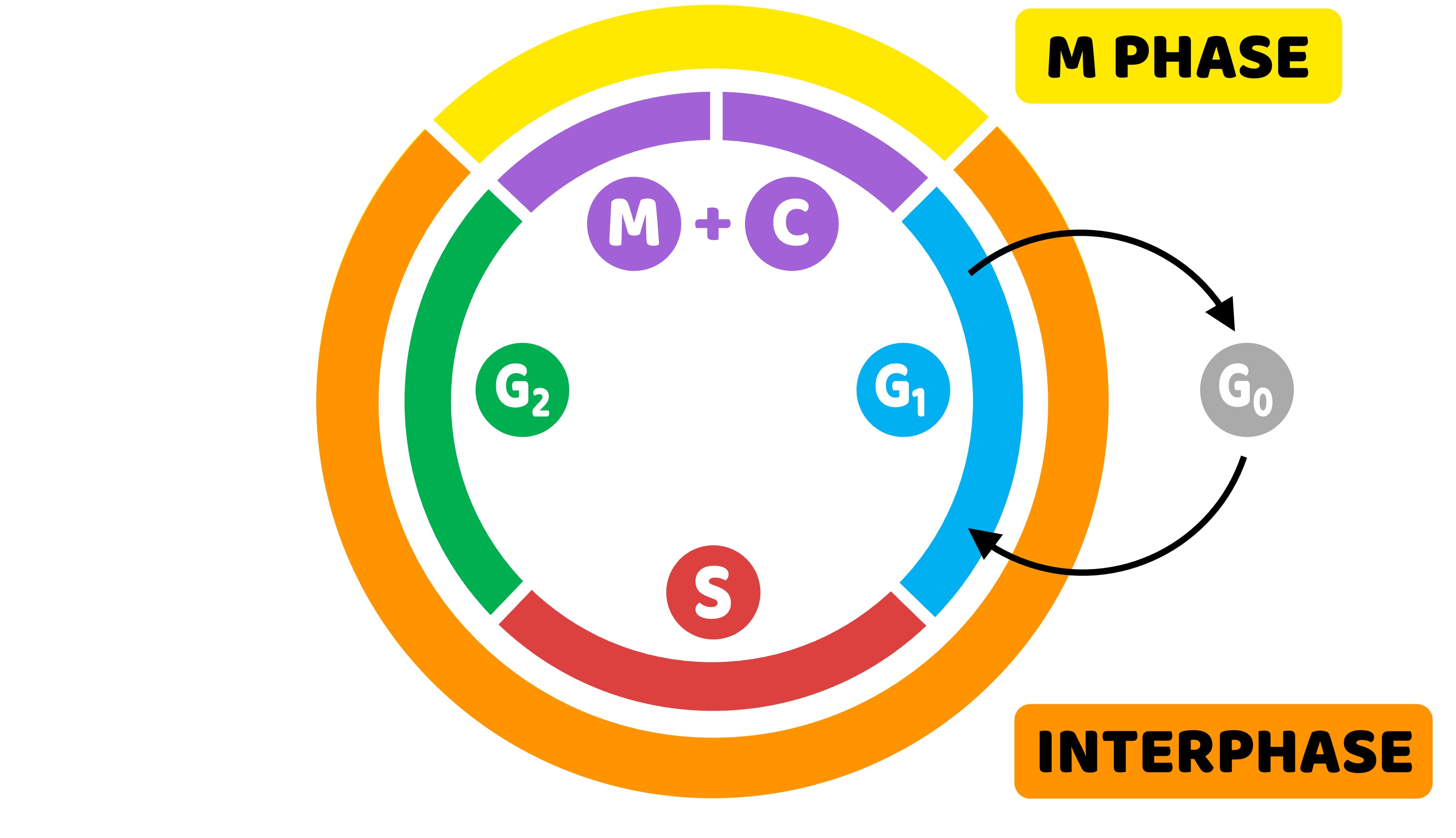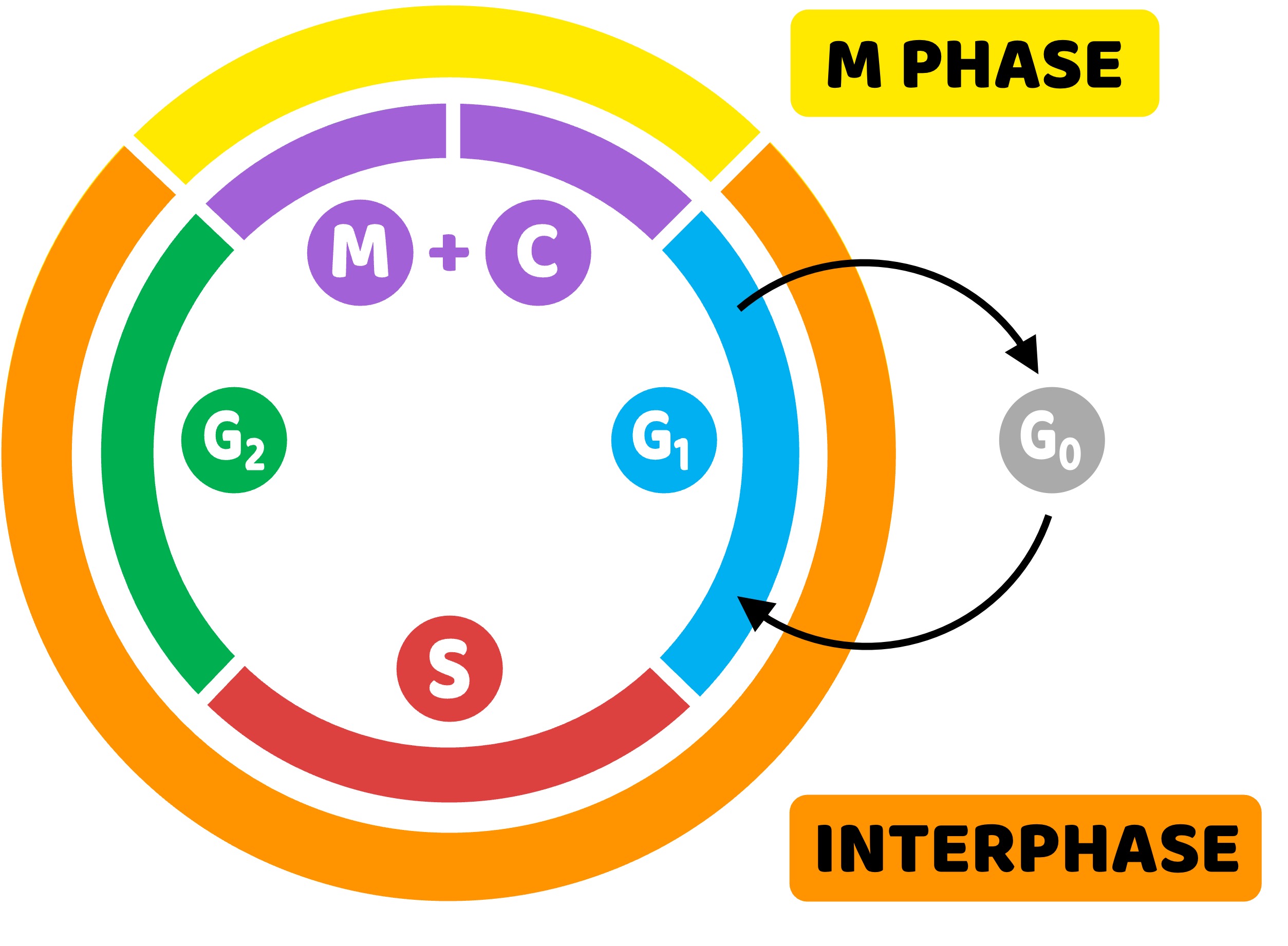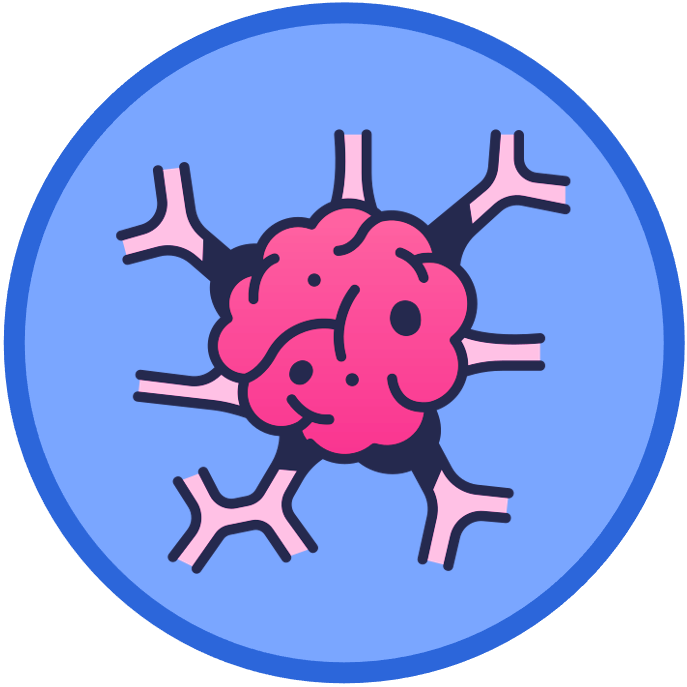

Cell Cycle
In eukaryotic cells, cell proliferation results from a tightly controlled process known as the cell cycle
-
The cell cycle is a repeating sequence of events that occurs between one cell division and the next
-
This cycle is divided into two main stages – interphase (including G1, S and G2) and the M phase (mitosis and cytokinesis)
Interphase
Interphase is the metabolically active period between cell divisions and is a continuum of three distinct phases
-
G1 – First intermediate gap stage in which the cell grows and prepares for DNA replication
-
S – Synthesis stage in which DNA is replicated
-
G2 – Second intermediate gap stage in which the cell finishes growing and prepares for cell division
M phase
The M phase consists of two distinct periods in which the cell and contents divide to create two genetically identical daughter cells
-
Mitosis – Nuclear division, whereby DNA (as condensed chromosomes) is separated into two identical nuclei
-
Cytokinesis – Cytoplasmic division, whereby cellular contents are segregated and the cell splits into two
Some cells may leave the cell cycle and enter into a non-dividing quiescent state called G0 (i.e. resting stage)
-
Cells in this state will perform their differentiated function but do not divide further (e.g. neurons)
Cell Cycle Stages


Interphase is an active period in the cell cycle when metabolic reactions prepare the cell for division
-
DNA replication – DNA is copied during the S phase of interphase
-
Organelle duplication – Organelles must be duplicated for both daughter cells
-
Cell growth – Cytoplasmic volume must increase prior to division
-
Transcription / translation – Key proteins and enzymes are synthesised
-
Obtain nutrients – Vital cellular materials must be present before division
-
Respiration (cellular) – ATP production is needed to drive the division process





